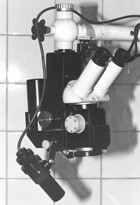Our small yet extremely complex brain has so much work to do for us; be it the smallest of the movement like picking up a pen, walking, moving our eyelids, crying, anger, joys, laughter, jests, fears or our pleasures, they all arise from our brain.
It’s just about one kilogram mass of pinkish grey tissue almost of the size of a cantaloupe. Though small, our brain is one of the most complex organs in the universe with an enduring mystery. It’s an organ which makes us what we are.
To handle our brains we need a team of doctors for evaluation from a neurologist to a cardiologist, and even an otorhinolaryngologist.
But when the time comes to open up the brain, all those specialists step back and a person with a unique profound responsibility who is very well versed with manual dexterity, hand eye coordination, spatial perception and tactile memory steps in the picture to treat this special organ, and yes they are Neurosurgeons.
What Makes Neurosurgeons Breed Apart?
It’s not easy to get a tag of a neurosurgeon which nearly takes 12 to 14 years.
It takes hours of painstaking work – prepping, cutting, sawing, drilling, clamping. They learn to walk the tightrope between confidence and hubris with mind in the zone.
Along with the highly technical skills which they acquire with years of practice, they should have the common sense in knowing their limits, knowing how to stay out of trouble or get out of it, knowing when to stop the surgery if they have to.
There is no stand of timidity as possibility of failure, be it deficit or death always looms large.
They can’t let their guard down even for a moment as there is constant risk benefit analysis. This experience comes with age and as neurosurgeon gets older all the complications and consequences starts to weigh on them and they become a bad loser!
Neurosurgeons have embraced a reputation of narcissism and austerity. We get such stalwarts rarely as their contribution is immense with true conviction. They encircle their life in it.
When it comes to contribution as per in neurosurgery we can’t forget to mention two brilliant men descending from two Muslim countries; the respectable guys are Dr. Ayub Khan Ommaya and Dr. Mahmut Gazi Yasargil.
Revolutionary Ommaya

Dr. Ommaya invented the Ommaya Reservoir which was a breakthrough in the field of neurosurgery.
He invented an Ommaya reservoir which was a breakthrough in the field of neurosurgery.
A Pakistani neurosurgeon par excellence. Dr. Ayub Khan Ommaya, his neurological career has just seen the sky and with his dedication he could make the work of many neurosurgeons easier.
It was the first subcutaneous reservoir where in a catheter is placed just below the layer of skin directly below the dermis and epidermis, that allowed repeated intrathecal injections which is given directly into the spinal canal, more specifically in the subarachnoid space.
This helped immensely to avoid giving repeated pricks to the patient for chemotherapy thus reducing their sufferings.
He worked with Godfrey Hounsfield to determine the spatial resolution of Computed Tomography Scanner which opened the door for its use in stereotactic surgery. He pioneered spinal angiography.
He was the first to treat spinal cord arteriovenous malformation by percutaneous embolization of an intercostal artery using stainless steel pellet.
He laid the foundation of centripetal theory in biomechanics of traumatic brain injury. He focused on the problem of transplantation of islets cells for treatment of Diabetes. He also said that emotions play an important role in consciousness.
The Bio-Inventor
He was a Turkish medical student and a neurosurgeon. Neurosurgeon Man Of Century 1950-1999; Dr. Mahmut Gazi Yasargil was called so due to his outstanding contributions which provided basis for practice and the definition in the field of neurology.
He believes that careful examination revealed location of pathology while the behavior and pattern of development of symptoms could reveal the nature of the process.
Microsurgical approaches in neurology were once thought of as impractical and unnecessary.
He devoted his life to neurosurgery as an innovator, inventor, teacher and author – these techniques are now the absolute minimum standard of care for all neurosurgeons.
His inventions include the floating microscope, self-retaining adjustable retractor, and ergonomic aneurysm clips which have revolutionized the field.
He is the first neurosurgeon to do cerebral vascular bypass under microscope in 1967.

Dr. Yasargil invented the Floating Microscope which revolutionized the field of Microneurosurgery.
Dr. Yasargil’s contributions to neurosurgery have dramatically altered how virtually every procedure is performed.
His landmark Microneurosurgery series is considered the definitive reference in the field where he gave thorough descriptions of the microsurgical anatomy of the brain, nearly 300 photographs and drawings which brings theoretical concepts to life, contributions from top worldwide Neurosurgeons.
He detailed information on subarachnoid cisterns which is considered the roadmap of microneurosurgery.
Neurosurgery is a complicated science which is yet made simpler by hardships of neurosurgeons so that our lives become safer and healthier. We require many more such expertise to unshackle us from our severe illnesses.
Neurosurgeons have kept their realm at the top of the medical world. They have maintained their pedigree, gathering around the idea that they stand above all surgeons.
The marvelous contributions of those two brilliant modern scientists hailing from Muslim countries were a great leap for humanity and medicine. Let’s hope to see many more youths like them in the coming years insha’allah.
This article is from Science’s archive and we’ve originally published it on an earlier date.
References:
- Journal of Neurosurgery, Jeffrey N. Bruce, MD, 19 June 2015.
- Surgical Neurology International. Mansher Singh, Arturo J. Rios Diaz, Alexandra J. Golby, Edward J. Caterson 23 July 2015.
- Essentials of Neurosurgery, JJ Maccabe, October 1981.
- Ayub K. Ommaya. 78; Neurosurgeon and Authority on Brain Injuries, July 14, 2008, by Joe Holley.
- Congress of Neurological Surgeons, M. Gazi Yasargil, 1986, New Orleans.
